When Is the Best Time To Send an Email?
According to research, the best time to send an email is between 9 a.m. and 11 a.m. Additional engagement peaks can occur in the early afternoon (1–2 p.m.) and evening (5–6 p.m.).
For B2B emails, sending during work hours (especially mid-morning) yields better results. In contrast, B2C marketers can experiment with emails during weekends or evening hours because that’s when individual consumers are home and able to check personal emails with more focus.
In the rest of this post, I’ll share the research and data behind the best time to send emails based on the latest email marketing statistics. And, I’ll tell you my tips for how you can achieve the high open rates and click-through rates (CTR) that you’re looking for.
- Studies on the Best Time To Send Email
- How To Find the Best Time To Send Marketing Emails
- Optimizing Emails To Grow Your Subscriber List Faster
Studies on the Best Time To Send Email
I scoured the web and compiled open rate data from the most authoritative research studies before confirming that Tuesdays and Thursdays between 9am and 11am are the best times to send email. But there is nuance to that answer that could be helpful for your unique business, so I’ve also summarized those studies before so you can make the best decisions for YOUR business.
Here’s what they say:
1. Brevo’s Insights
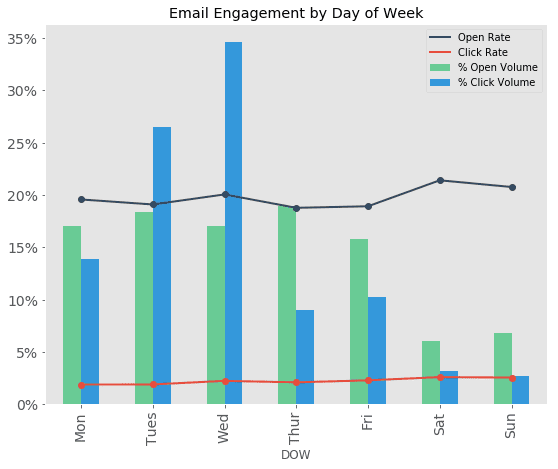
If you just glance at the chart above, you’d think that you should send all important promotional emails on Wednesdays.
However, Brevo’s full study emphasizes the importance of industry-specific timings.
Different industries vary in terms of the best workdays and times of day, although midweek emails perform best for most industries. Saturdays and Sundays are the worst days among all the industries Brevo included in their study.
Here is an overview of Brevo’s findings:
- Best time to send email by business type:
- B2B Professional Services: Monday or Tuesday, 8-10 a.m.
- E-commerce: Tuesday or Thursday at 10 a.m.
- SaaS (Software as a Service): Tuesday or Thursday, 2-3 p.m.
- NGOs (Non-Governmental Organizations): Tuesday or Thursday, 3-4 p.m.
- Marketing Services: Wednesday at 4 p.m.
- Offline Retail or Hospitality: Thursday, 8-10 a.m.
- Recommendation: Understand the nature of your business and the daily routines of your target audience. This will help you optimize the send times for better engagement.
2. GetResponse’s Research
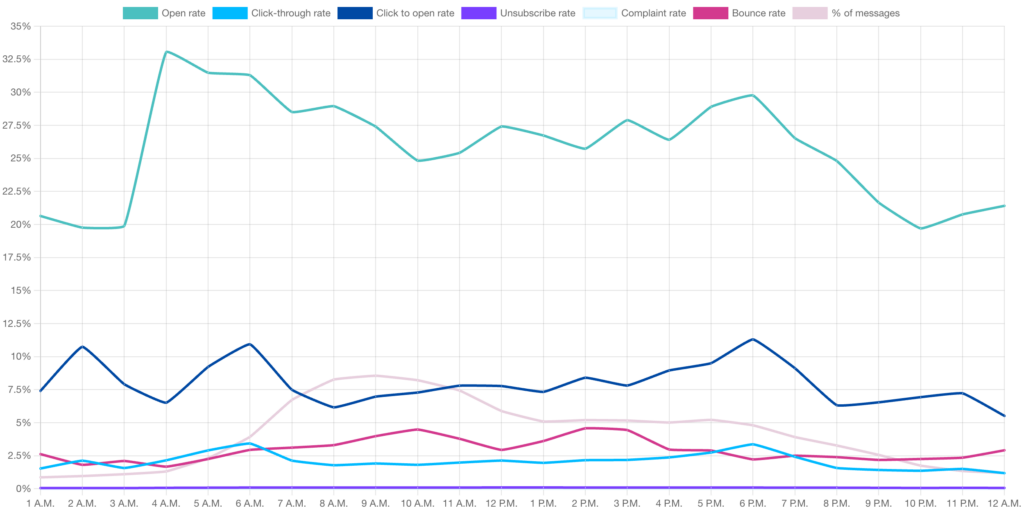
GetResponse’s data suggests that while there are peak times for engagement, it’s essential to consider the nature of the email.
For instance, many people check their email on their phones as soon as they wake up or at their desks when they first get to work.
- Best time to send an email: One email in the early morning (4-6 a.m.) and a second email later in the afternoon (5-7 p.m.).
- Recommendation: Monitor your metrics and adjust your strategies based on results. Testing different days and times can help in optimizing email campaigns.
3. Omnisend’s Study
Omnisend’s research highlights an important point: The best time to send an email varies depending on your primary goal for that campaign.
Omnisend’s data charts are divided based on the goal: open rate, click-through rate (CTR), and sales conversion rate.
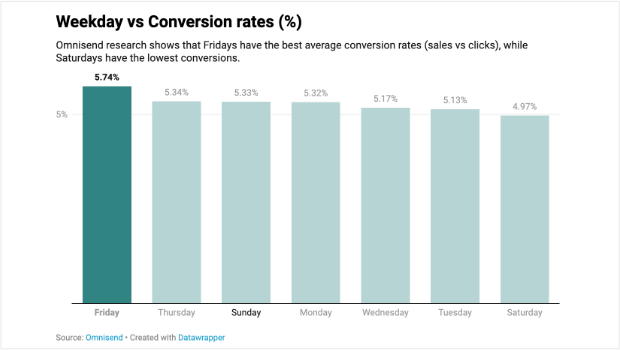
For instance, the chart above shows users are most likely to make purchases through your emails on Fridays. The best days for CTR are Friday and Sunday, while open rates are best on Tuesday, Wednesday, and Thursday.
This study goes beyond comparing different weekdays. They also have data on each day of the month. Open rates and CTR go up and down throughout the month. Sales conversions, however, are definitely highest on the first day of the month
While there are general patterns, Omnisend also points out that individual behaviors can be quite unique. That’s why it’s so important to understand your target audience. The study also emphasizes the significance of combining emails with other channels, like SMS, for better engagement.
- Best time to send email:
- Highest open rates: Tuesdays
- Best for conversions: Fridays
- Day of the month: You may also see better sales through emails sent on the first day of the month.
- Best time of day: 8 a.m., 2 p.m., or 5 p.m.
- Recommendation: Determine the primary goal of each email campaign, and that will help you decide the best day to send it. Also, while general trends provide a starting point, always be ready to adapt based on your audience’s behavior. Multi-channel strategies can also enhance engagement.
4. HubSpot’s Analysis
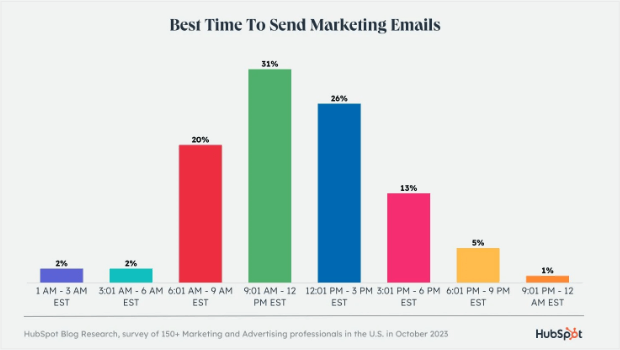
HubSpot surveyed over 150 marketers in their email timing study. Their data underscores the importance of understanding the difference between B2B and B2C audiences.
The bar graph above shows that 31% of the marketers surveyed get the best engagement on marketing emails sent between 9:01 a.m. and 12 p.m. EST. B2B businesses prefer the same time span but at a much higher rate of 47.9%.
So while 9:01 a.m. to 12 p.m. is the best time for both B2C and B2B, B2C marketers have more flexibility. Also, Monday emails are an exception: the best time for those is 6:01 a.m. to 9 a.m. EST.
- Best time to send email: Tuesdays between 9:01 a.m. and 12 p.m. EST. Emails sent after 6 p.m. get by far the lowest engagement, so late evening and night are the worst times.
- Recommendation: Segment your audience, and tailor your send times based on user behavior and demographics. This can lead to better engagement rates.
5. Salesforce’s Research

This Salesforce data from 2021 is a little older than the other studies on our list. However, it still provides insights you can learn from. Specifically, Salesforce emphasizes the dynamic nature of optimal send times.
Their system, built with Spark, scales for customers with varying data volumes and uses an assembly model structure to provide optimal recommendations.
- Best time to send email: 8-10 a.m. in the recipient’s local time zone is the best time to send emails.
- Recommendation: Consider the recipient’s behavior, timezone, and other factors. Personalization is key, and automated systems can help in determining the best send times.
6. Moosend’s Analysis
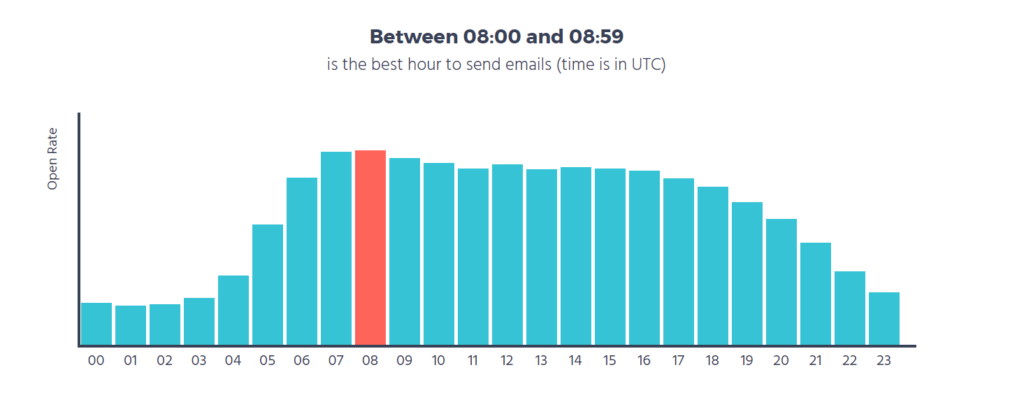
Moosend emphasizes the importance of metrics like email open rate, click-through rate, and conversion rate.
Their study also highlights the significance of refining subject lines and leveraging email marketing automation.
- Best time to send email: Thursdays have the highest open rate, followed by Tuesdays as the second-best day. 8-9 a.m. see higher open rates.
- Recommendation: While timing is crucial, other elements like content quality, email subject lines, and personalization play a significant role in the success of email campaigns.
While each study provides valuable insights, the overarching theme is clear: understanding your audience’s behavior is crucial.
How To Find the Best Time To Send Marketing Emails
The best way to find what works for your business is by:
- Studying your audience
- Testing the time you send emails
1. Studying the best time to send emails for YOUR audience
To understand your audience, here are a few questions you should ask yourself:
- What do you know about your subscribers and their relationship with you? Do you sell to businesses or consumers? Remember, the best time to send varies for B2B vs. B2C.
- What do they do for a living? A stay at home mom might have time to check their email during late afternoon during nap time. A mid-level manager might check it mid-morning after their first meetings of the day. A CEO might check it after lunch. Optimize your sending times on your ideal customer’s role.
- What is the content of your emails? A B2C email including a sale might be more effective at the start of the month when there is more budget available for purchases. A B2B upgrade offer might be more effective at the end of the quarter as marketing managers realize they need to use their budgets or lose them.
- What times did your existing subscribers sign up? Export your email list and compare the times your existing subscribers registered. That’s probably a good indication of the time frame that’s also most effective for sending emails, too.
The more you get to know your audience, the better you’ll get at choosing times that resonate with them.
2. Testing the best time to send emails
All good email marketing platforms allow scheduling of email marketing campaigns. Some even allow testing one sending time against another. Whether your platform offers split-testing or not, you can still test sending times by scheduling emails to send at different times, then reviewing analytics to see which emails saw the highest open and click rates. Once you’ve discovered what works best for your audience, you can use that data in your email automation strategy.
Optimizing Email Open Rates and Click Through Rates
As promised, here are even more resources to help you improve your email open rates and click through rates.
- What is a Good Open Rate (and how to measure yours)?
- What is a Good Click Through Rate?
- How to Create an Effective Email Autoresponder Series
- Small Business Email Marketing: 7 (Easy) Tips for Growth
- 13 Benefits of Email Marketing: Why (and How) to Grow Your List
What are the best times to send emails times for you? Let us know in the comments below.

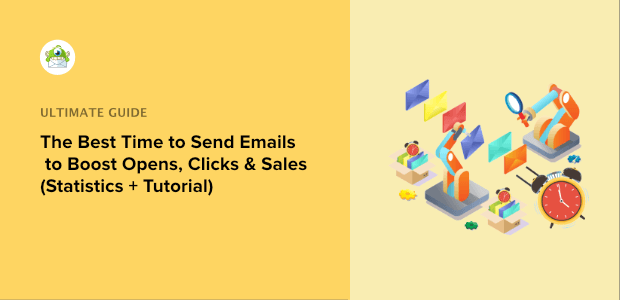
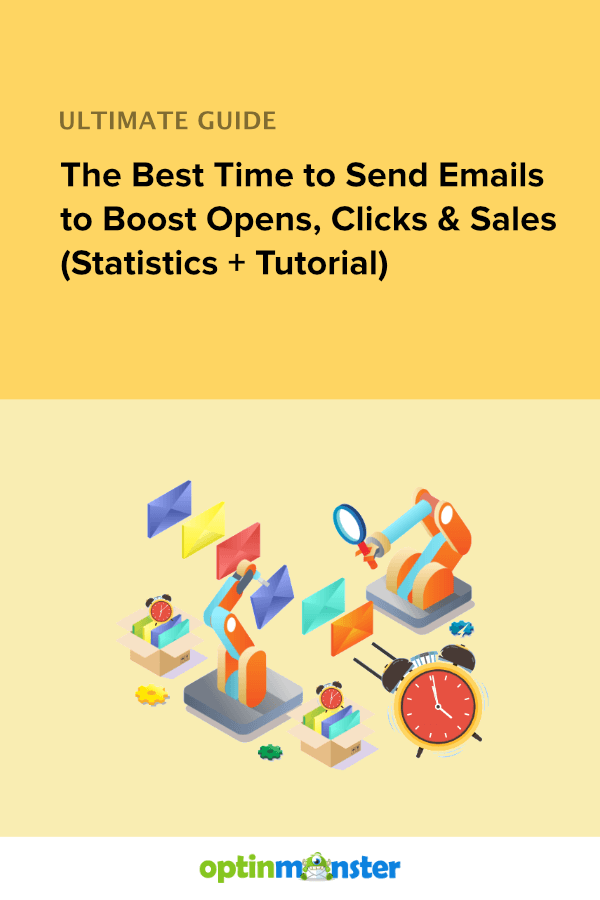



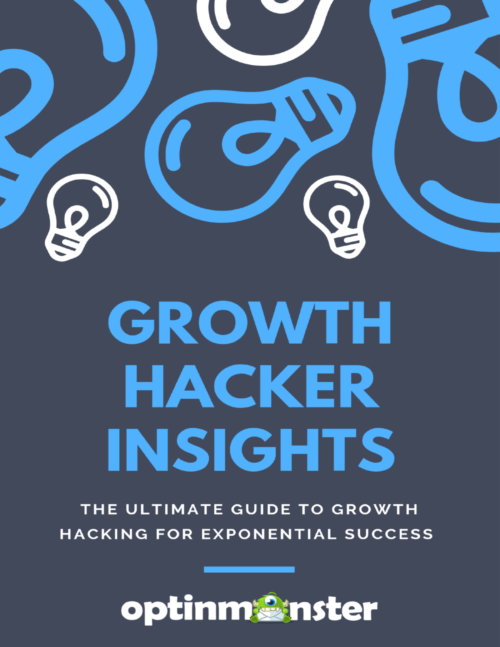

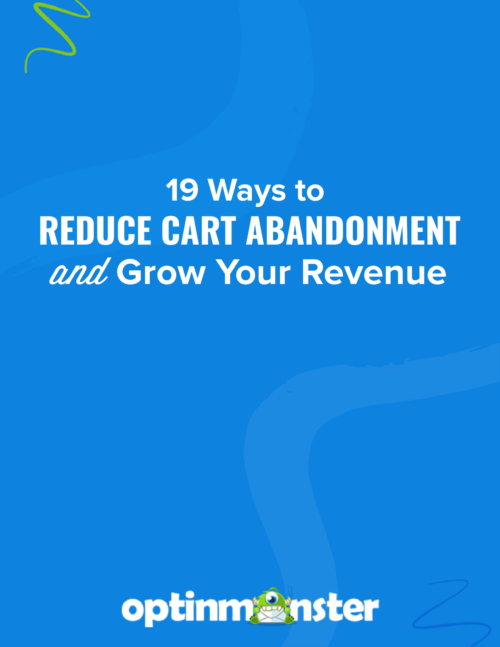



Add a Comment